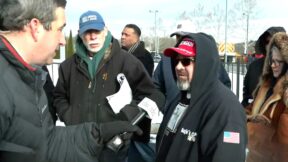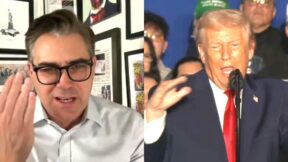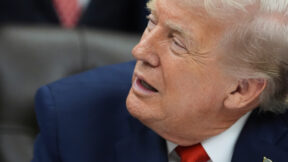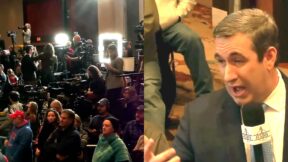Up to 57 Million Trump Twitter Followers Are Fake Or Inactive, Expert Tells Mediaite
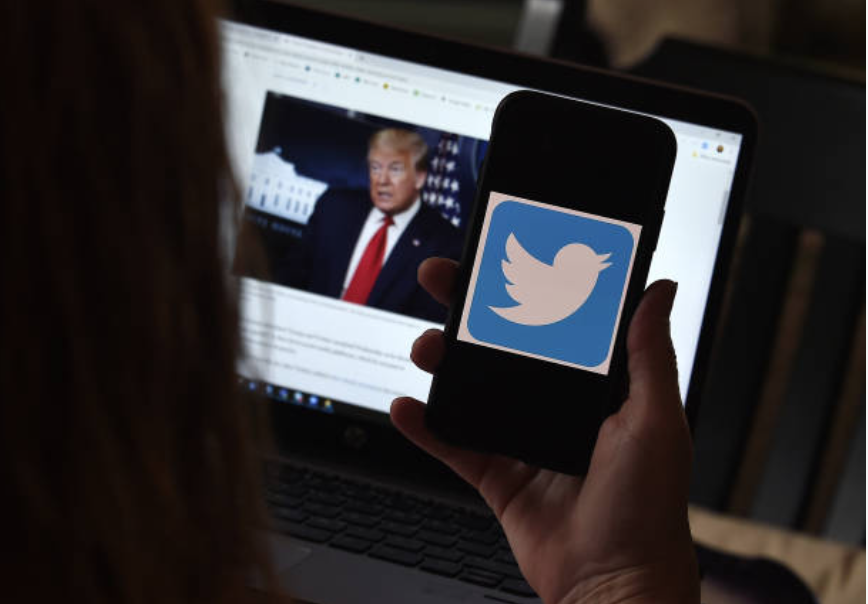
Olivier Douliery/Getty Images
As many as 70 percent — or 56.3 million — of President Donald Trump’s Twitter followers are fake or inactive, according to an expert interviewed by Mediaite.
“Our tool defines ‘fake followers’ as accounts that are unreachable and will not see the account’s tweets either because they are spam, bots, propaganda, or no longer active on Twitter,” said Casey Henry, the co-founder and chief technology officer of SparkToro, a software company that provides an online tool for analyzing followers on Twitter.
The problem isn’t limited to the president. SparkToro suggests 48 percent of the accounts following former President Barack Obama — a little more than 57 million out of 119.5 million — are also “fake,” in addition to 45.8 percent — or 12.8 million — of those following former Secretary of State Hillary Clinton. The figure for former Vice President Joe Biden, who enjoys a relatively paltry following of 6.1 million, is 43 percent, or 2.6 million fake accounts.
Henry said Trump’s number may be higher for reasons beyond his control. “First, when someone signs up for Twitter, he is one of the first accounts they suggest you follow from my testing. So if Twitter only keeps a small percentage of new accounts active, his number would continue to go up, because the tool considers non-active accounts as ‘fake.’ Secondly, there are a large number of automated accounts or bots that tend to follow and spread his message. We do our best to identify those and add them into the percentage.”
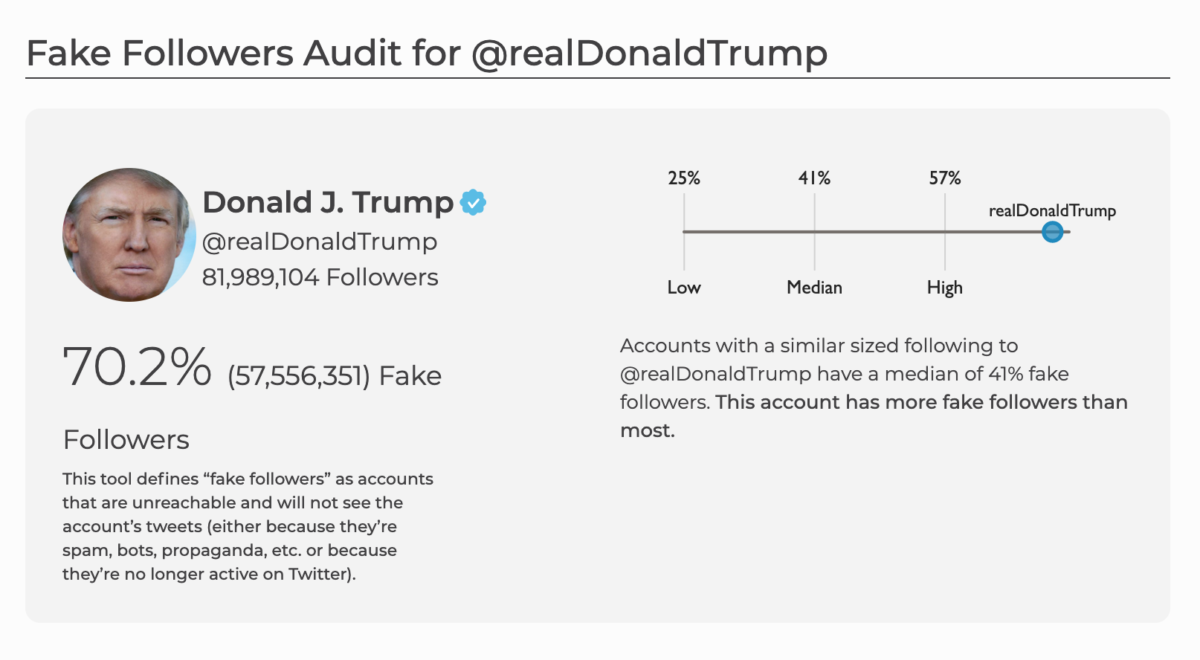
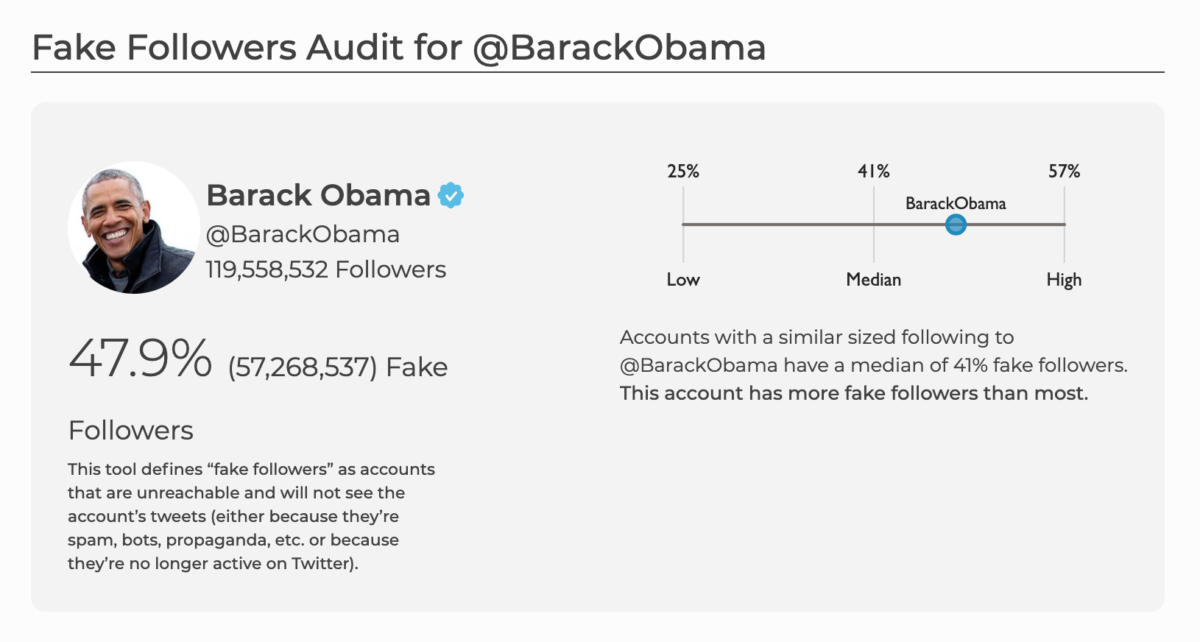
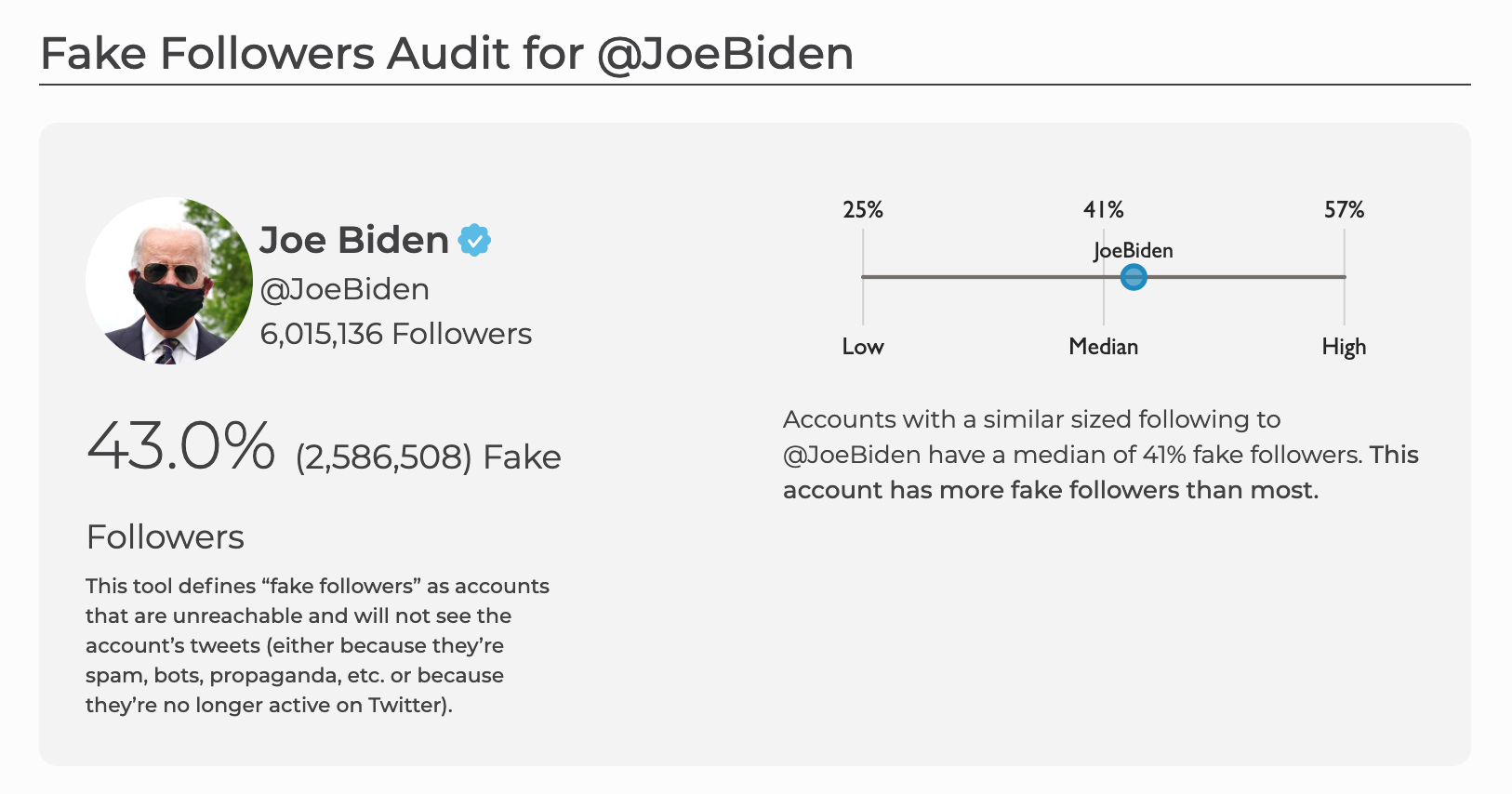
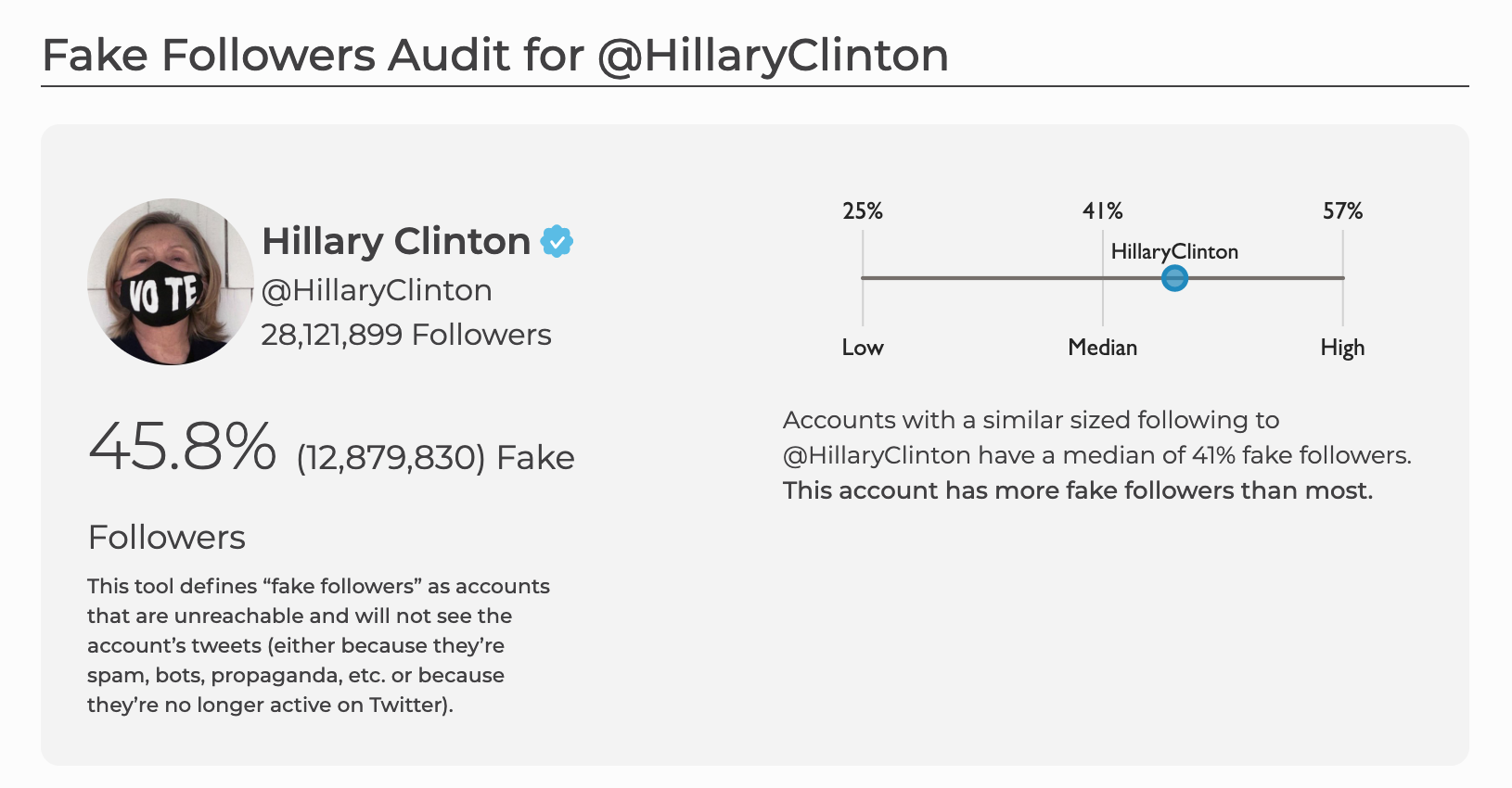
The problem isn’t a new one, but it does seem to be growing. Studies conducted by several organizations in 2016 suggested that around 60 percent of Trump’s followers at the time were “fake,” in the range of 5 million. By some estimates, nearly 80 percent of Obama’s followers were legitimate that year.
Two drivers behind the proliferation of fake accounts include commercial entities selling followers for a fee and state actors seeking to push political narratives online, especially China and Russia. A report Twitter presented to Congress in 2018 suggested that 677,000 real Twitter users engaged with fake accounts linked to the Russian government during the 2016 election. Last year, the platform suspended more than 200,000 accounts it said the Chinese government was using to discredit protesters in Hong Kong.
Nonetheless, a New York Times report this week suggested fake accounts backed by China are on the rise again this year, tied in part to state-backed media entities seeking to “amplify pro-Beijing messages” and discredit Trump. In a generic statement responding to the Times’ findings, Twitter said, “Improving the health of the public conversation is a priority for our company.”
Exactly how many Twitter users are fake? “That’s a tough question,” Henry said. “On the 400,000ish unique Twitter accounts that have been run through our tool, the average number of fake followers is around 30 percent. Given that, my guess is that upward of 40 percent to 50 percent could be inactive or bots.”
Twitter commandeered headlines last month when Trump signed an executive order asking regulators to look at tech companies after the platform “fact-checked” one of his tweets. The heightened focus could make the issue of fake accounts more relevant than ever, prompting critics to question why the company hasn’t done more to crack down on a problem that may affect election security.
“It’s abundantly clear Twitter has no interest in securing its own platform,” National Pulse Editor in Chief Raheem Kassam, who co-hosts the “War Room” podcast with former Trump adviser Steve Bannon, told Mediaite. “This is something its shareholders should be deeply concerned about, not just from a legal perspective, but from a fiduciary perspective.”
Kassam, who like Bannon is a vocal critic of China and its state-backed media outlets, argued the president should “call out the Chinese Wu Mao bot army” — a reference to China’s paid online propagandists — “and open a formal investigation immediately. It is also past time for the president to build a presence on another platform, like Parler,” a smaller platform that bills itself as an alternative to Twitter.
Henry suggested that Twitter could do more to act on the problem, but does not because of its interest in portraying an active user base. “My personal feeling is that Twitter could easily identify bots and new accounts that are up to things that violate their terms of service. Being a public company, my feeling is they are playing to Wall Street a bit and not being aggressive for fear of their active daily and monthly user numbers dropping.”
He added, “With the limited data we can access via their API, we have been able to identify accounts that seem to be bots very easily. If you look at the additional internal data that Twitter has, like IP address, email, browser fingerprint, and a whole host of other data, they should be able to flag millions of bots very quickly.”
